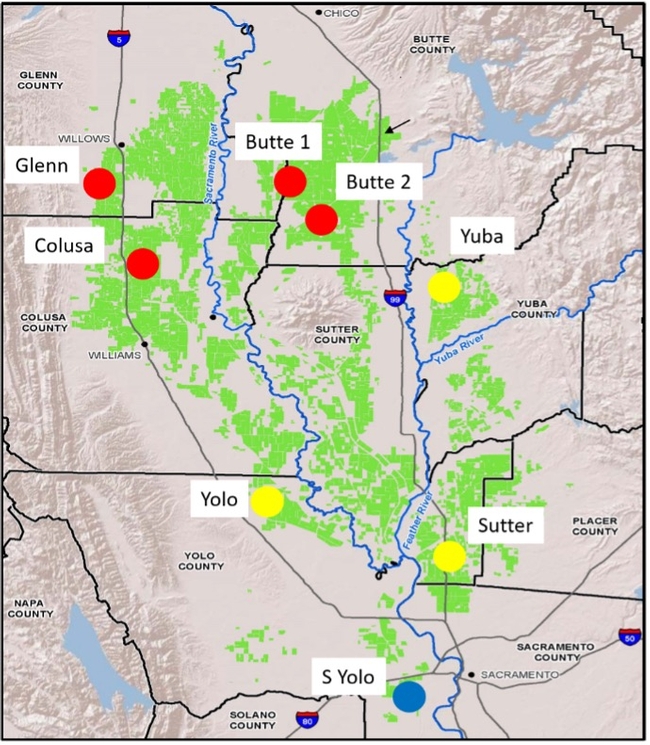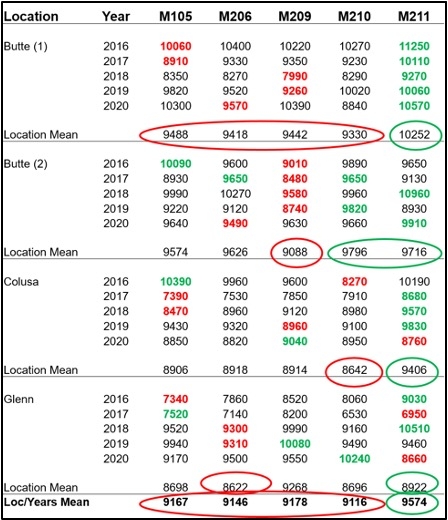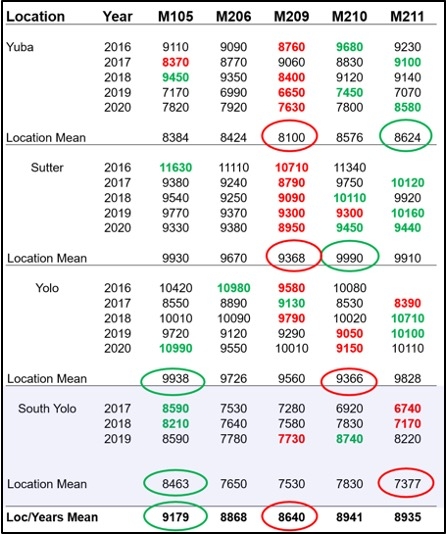- Author: Michelle Leinfelder-Miles
UC Cooperative Extension will host a Healthy Soils Program field demonstration day on cover cropping in rice systems. The meeting will take place on Thursday, February 29th, from 9:30am to noon, on Staten Island in San Joaquin County (23319 N. Staten Island Road, Thornton). Presentations will describe field trials to evaluate winter cover cropping, incentive programs for growers, and weed management topics ahead of the 2024 growing season. There will also be an opportunity to view different cover crop species for performance. Attendance is free, and registration is not required. CCA continuing education credits will be offered (0.5 PM, 1.0 CM, 0.5 PD). The agenda is pasted below, and a downloadable version is attached. Thanks for your interest in UC Cooperative Extension programming, and we hope to see you later this month!
9:30am Arrive at Staten Island grain silo to sign in (See yellow star on the map)
9:45am Depart to field location – Don't be late!
10:00am Welcome and Introductions: Michelle Leinfelder-Miles, UCCE Delta Region
10:05am Winter Cover Cropping in Rice Systems – Field Demonstrations: Michelle Leinfelder-Miles, UCCE Delta Region
10:20am Cover Crop Variety Evaluations: Sara Rosenberg, UC Davis
10:35am A Grower's Perspective on Cover Crops: Jerred Dixon, Conservation Farms and Ranches
10:55am Healthy Soils Program – Block Grant Pilot Program: Chris Kelley, CA Land Stewardship Institute
11:10am What's New in Rice Weed Management: Whitney Brim-DeForest, UCCE Sutter/Yuba
11:25am Weedy Rice Updates: Whitney Brim-DeForest and Michelle Leinfelder-Miles, UCCE
11:40am Discussion, Viewing of Field Plots, Evaluation
2024 Rice Cover Crop Field Day Agenda FINAL

- Author: Luis Espino
Over the years, I have heard from several growers and PCAs that after a dry winter like we just had, the soil profile can be really dry, and it may take longer to flood fields. Additionally, with the increase of area under fallow, water losses to seepage may be larger than usual, also resulting in longer time to flood fields. Longer flood times give TPS a head start over rice seedlings, increasing the risk of TPS injury.
TPS eggs hatch soon after the soil is saturated, and the young TPS are very small and hard to see. TPS grow very fast; sometimes it seems they appear out of nowhere from one day to the next. Monitor for TPS closely, especially if flooding is taking longer than usual.
When to treat: TPS will feed on the young coleoptile and radicle as they emerge from the seed. If you can see TPS while these structures are developing, a treatment is needed. Once seedlings have a well established root and well developed spike, the risk of injury is low. Even large TPS will not injure well established seedlings.
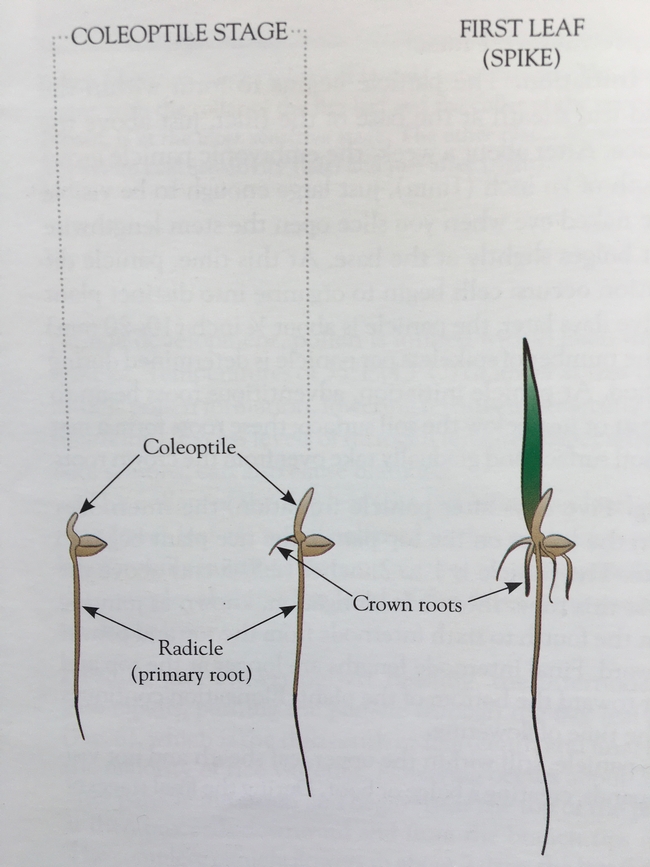
Products:
- Pyrethroid insecticides (Warrior, Mustang) work well, but resistance is a concern in some areas.
- Carbaryl (Sevin) is also effective. This insecticide is not used because of concerns of phytotoxicity when propanil is used. Phytotoxicity can occur when propanil is applied 14 days before or after carbaryl. Given the timing of TPS treatment, it is very unlikely that phytotoxicity will occur when propanil is used 30 days later.
- Copper sulfate works well. Because of poor winter rainfall, there is a lot of straw residue in some fields. Straw can bind copper, so do not lower the rate.
- Diflubenzuron (Dimilin) works well when applied to small shrimp. Large shrimp will be affected but may take longer to die.
- Clothianidin (Belay) has worked well in trials.
- Author: Bruce Linquist
With planting season coming up, thinking about appropriate variety selection is key, and one of the first steps towards ensuring a good 2021 crop. Each year the California Rice Research Board funds a statewide variety trial testing program. Here I summarize some of that data.
These trails are on grower managed fields in eight locations around the Sacramento Valley as seen in the map. One major difference in the locations selected is nighttime temperatures in mid to late July when most of the rice is booting. Cold temperatures during this period can cause blanking and lower yields. On the map, locations in red are where cold nighttime temperatures are usually not a problem. These locations are generally north of highway 20. In yellow are locations where growers need to be concerned about low nighttime temperatures; while they may not occur every year, they are common. In blue (South Yolo) is a location where cold temperatures occur almost every year. Importantly, in each of these regions may be micro-climates where temperatures vary from the “average”.
Map showing variety trial locations in the Sacramento Valley. Dot color refers to nighttime temperatures in the last half of July (during booting). Red dots refer show locations where cold nighttime temperatures are not normally a concern for blanking. Yellow dots are those locations where cold temperatures more common, and the blue dot location is where cold temperatures occur almost every year. Temperatures are a concern when they drop below 58oF.
Some varieties are more tolerant of cold than others. Therefore, it is important to select varieties that are suitable for the location you are farming. In the tables below, are yield data from the past five years for each location in the variety trial. Only the main medium grains varieties are shown (M-105, M-206, M-209, M-210 and M-211). This data will allow for a more informed decision when it comes to variety selection.
The warmer locations are north of Hwy 20,in Glenn, Butte and Colusa counties. At these locations, M-211 consistently outperforms the other medium grains by 4 cwt/ac, on average, over the five years and four locations. Among the other varieties shown, there were no consistent differences among them.
In the cooler locations, M-209 performed the worst in general. In the moderately cool locations (yellow dots on the map), M-105 and M-211 both did consistently well. In the coldest location (South Yolo), M 105 performed the best; while M-209 and M-211 performed poorly. Both M-209 and M-211 have similar days to maturity (about 5-7 days later than M-206). This data suggest that M-211 may have a broader adaptability range than M-209 because it appears to be slightly more cold tolerant. However, in the coolest location even M-211 did not perform well.
M-206 versus M-210: M-206 has been the most broadly adaptable variety available. While it may not always be the highest yielder, it generally does well across all locations. M-210 is a new variety which has blast resistance. It is basically M-206 with genes for blast resistance and has similar time to heading. Based on these data M-206 and M-210 have almost identical yields in both the warm and cooler regions.
Thoughts on M-211: As seen in the data provided, M-211 is a tremendously promising variety in terms of yield potential. Furthermore, its sensory qualities are similar to premium grain varieties such as M-401. However, one draw back is that for good milling quality, M-211 needs to be harvested at 20-22% moisture. Harvesting below this moisture can result in low milling quality. Given this, it may not be a variety that is suitable for large acreage planting and this should be tested by growers.
- Author: Bruce Linquist
Considerations for choosing the right medium grain rice variety
With planting season coming up, thinking about appropriate variety selection is key, and one of the first steps towards ensuring a good 2021 crop. Each year the California Rice Research Board funds a statewide variety trial testing program. Here I summarize some of that data.
|
Map showing variety trial locations in the Sacramento Valley. Dot color refers to nighttime temperatures in the last half of July (during booting). Red dots refer show locations where cold nighttime temperatures are not normally a concern for blanking. Yellow dots are those locations where cold temperatures more common, and the blue dot location is where cold temperatures occur almost every year. Temperatures are a concern when they drop below 58oF. |
These trails are on grower managed fields in eight locations around the Sacramento Valley as seen in the map. One major difference in the locations selected is nighttime temperatures in mid to late July when most of the rice is booting. Cold temperatures during this period can cause blanking and lower yields. On the map, locations in red are where cold nighttime temperatures are usually not a problem. These locations are generally north of highway 20. In yellow are locations where growers need to be concerned about low nighttime temperatures; while they may not occur every year, they are common. In blue (South Yolo) is a location where cold temperatures occur almost every year. Importantly, in each of these regions may be micro-climates where temperatures vary from the “average”.
Some varieties are more tolerant of cold than others. Therefore, it is important to select varieties that are suitable for the location you are farming. In the tables below, are yield data from the past five years for each location in the variety trial. Only the main medium grains varieties are shown (M-105, M-206, M-209, M-210 and M-211). This data will allow for a more informed decision when it comes to variety selection.
The warmer locations are north of Hwy 20,in Glenn, Butte and Colusa counties. At these locations, M-211 consistently outperforms the other medium grains by 4 cwt/ac, on average, over the five years and four locations. Among the other varieties shown, there were no consistent differences among them.
In the cooler locations, M-209 performed the worst in general. In the moderately cool locations (yellow dots on the map), M-105 and M-211 both did consistently well. In the coldest location (South Yolo), M 105 performed the best; while M-209 and M-211 performed poorly. Both M-209 and M-211 have similar days to maturity (about 5-7 days later than M-206). This data suggest that M-211 may have a broader adaptability range than M-209 becasue it appears to be slightly more cold tolerant. However, in the coolest location even M-211 did not perform well.
M-206 versus M-210: M-206 has beenthe most broadly adaptable variety available. While it may not always be the highest yielder, it generally does well across all locations. M-210 is a new variety which has blast resistance. It is basically M-206 with genes for blast resistance and has similar time to heading. Based on these data M-206 and M-210 have almost identical yields in both the warm and cooler regions.
Thoughts on M-211: As seen in the data provided, M-211 is a tremendously promising variety in terms of yield potential. Furthermore, its sensory qualities are similar to premium grain varieties such as M-401. However, one draw back is that for good milling quality, M-211 needs to be harvested at 20-22% moisture. Harvesting below this moisture can result in low milling quality. Given this, it may not be a variety that is suitable for large acreage planting and this should be tested by growers.
2021 Medium grain variety selection
- Author: Whitney Brim-DeForest
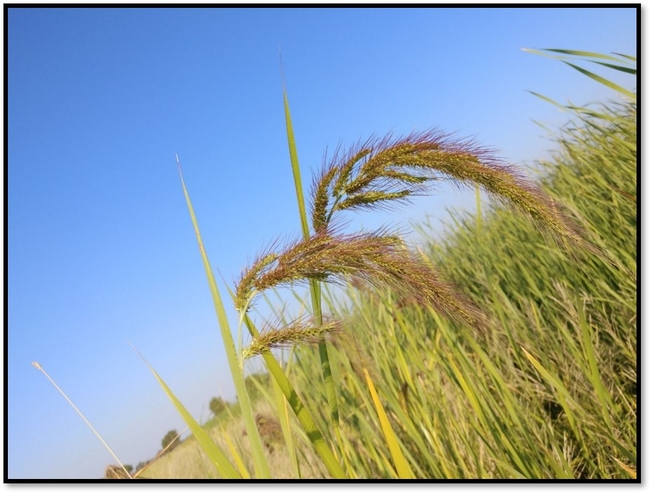
We came up with a preliminary set of characteristics to distinguish this unknown biotype or species (we are unsure if it is a distinct species) from the typical barnyardgrass and late watergrass found in California rice fields. All were characterized by their seed size and awns (Table 1).
|
Preliminary Identification |
Seed Description |
|
Late watergrass |
Large size, no awns |
|
Early watergrass |
Large size, awned (all seeds) |
|
Barnyardgrass |
Small size, variably awned (some seeds have awns, some do not) |
|
New biotype/species (unknown) |
Small size, awned (all seeds) |
In 2018, we collected 8 samples from the field, and used two late watergrass samples from known susceptible populations to use as controls. We conducted a screening in the greenhouse, to see if we could replicate what we were seeing in the field. Field rates of Cerano® (clomazone), Butte® (benzobicyclon+halosulfuron), Granite GR® (penoxsulam), and Bolero® (thiobencarb) were used as the early-season granular applications. Field rates of SuperWham® (propanil), Regiment® (bispyribac-sodium) and Clincher® (cyhalofop) were used to test for the late-season cleanup applications. In the greenhouse, all applications were made at the 1.5 leaf stage of the grass.
Results indicate that 8 of the 8 samples were not controlled (less than 50% by biomass, in comparison to the untreated controls) by Granite GR® or Butte®. 7 of the 8 samples were not controlled by Bolero®, and 6 of the 8 were not controlled by Cerano®. This closely follows what growers were stating had occurred in the field: the watergrass was escaping early-season control, and was then difficult or impossible to control with later-season herbicide applications. SuperWham®, Regiment®, and Clincher® controlled 8 of 8 samples (at least 60% control). However, since the greenhouse application was conducted at an early timing (1.5 leaf stage), it is possible that later applications in the field may be less effective.
For growers, the implications of this preliminary screening are that control of this new biotype/species will need to be prioritized early in the season. Possible treatments (keep in mind that these have not been field-tested and could cause phytotoxicity) could be: a stale seedbed using a non-selective herbicide; pre-plant Abolish® (thiobencarb) followed by Cerano® or Butte® or Granite GR®; Cerano® followed by Butte® or Bolero® or Granite GR®; or Butte® followed by Granite GR® or Bolero®. There is still a strong likelihood that a follow-up application may still be required later in the season, even with these early-season applications.
In 2020, more than 60 watergrass samples were collected from all over the rice-growing region. We will continue working on identification and conduct further herbicide screening this year.


